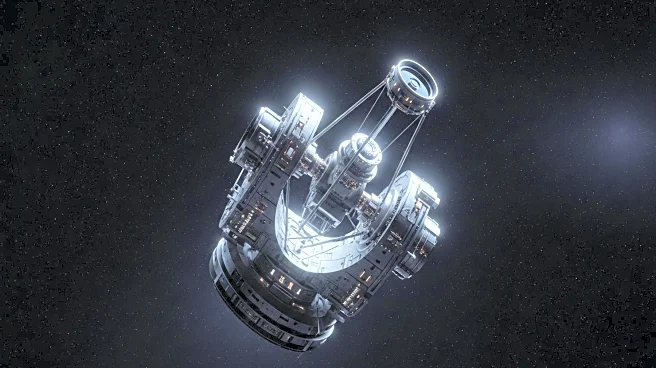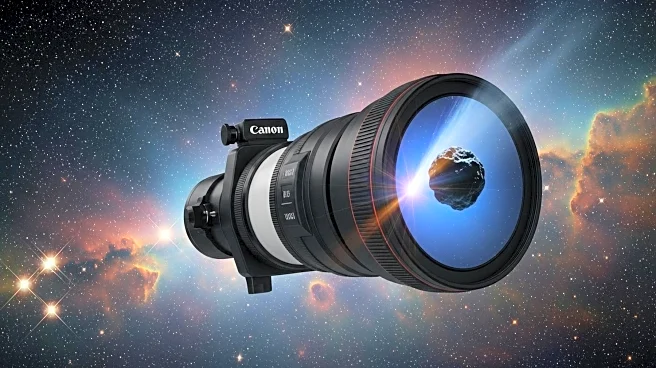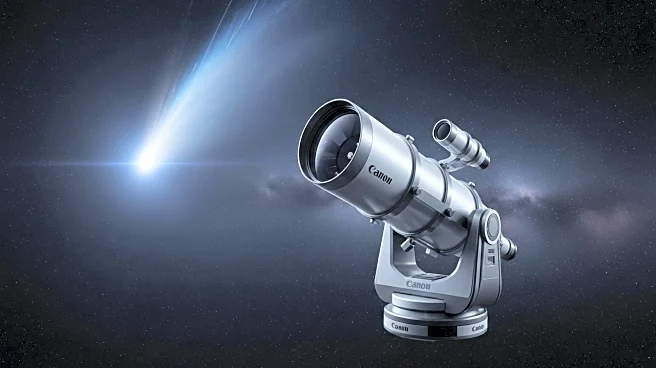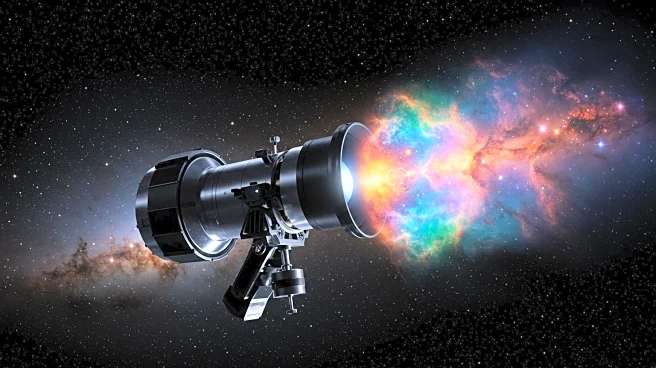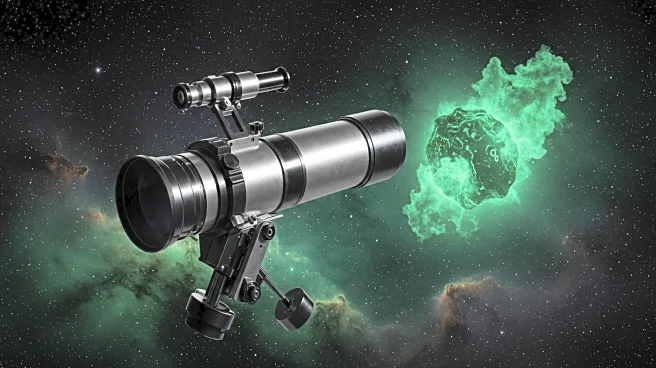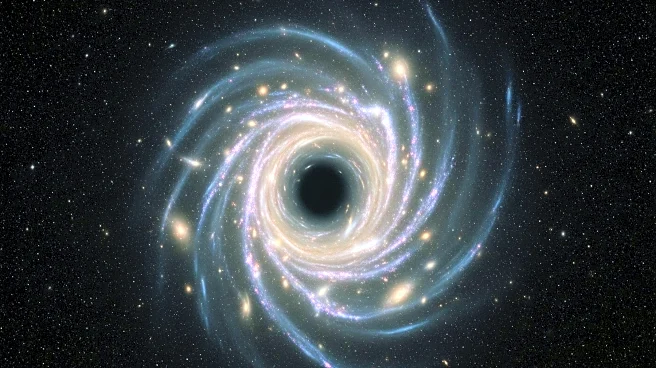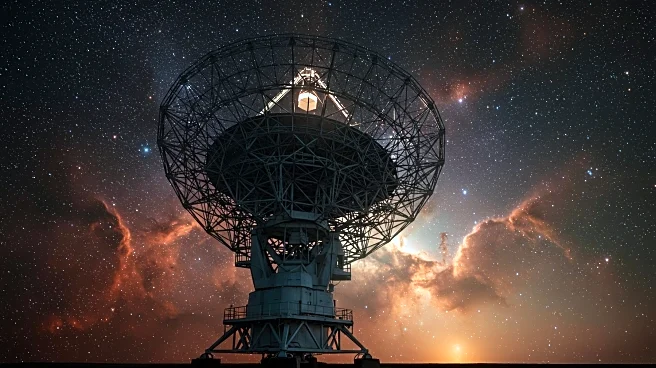What is the story about?
What's Happening?
The James Webb Space Telescope (JWST) has observed interstellar comet 3I/ATLAS, revealing its unique composition. Detected by the ATLAS survey telescope, 3I/ATLAS is only the third interstellar object discovered. JWST's Near-Infrared Spectroscopic instrument found the comet's coma is rich in carbon dioxide, unlike typical comets dominated by water. This suggests 3I/ATLAS formed in a high-radiation environment or near the CO2 ice line of its parent star's protoplanetary disk. The comet's trajectory indicates it originated from an old, low-metallicity star system in the Milky Way's thick disk.
Why It's Important?
The discovery of 3I/ATLAS's unusual composition provides insights into the conditions of distant star systems, enhancing our understanding of interstellar objects. This research could inform models of comet formation and the chemical processes in protoplanetary disks. The findings may impact theories about the origins of comets and their role in delivering organic compounds to planets, potentially influencing the search for life beyond Earth.
What's Next?
Astronomers expect 3I/ATLAS to remain observable through mid-2026, offering opportunities for further study. Continued observations may reveal more about its composition and origin, contributing to the broader understanding of interstellar objects. Researchers will likely focus on comparing 3I/ATLAS with other comets to refine models of cometary evolution and interstellar travel.
Beyond the Headlines
The study of 3I/ATLAS may lead to advancements in spectroscopy techniques and the development of new instruments for analyzing interstellar objects. Understanding the comet's formation environment could provide clues about the early conditions of star systems and the potential for life-supporting planets.
AI Generated Content
Do you find this article useful?
